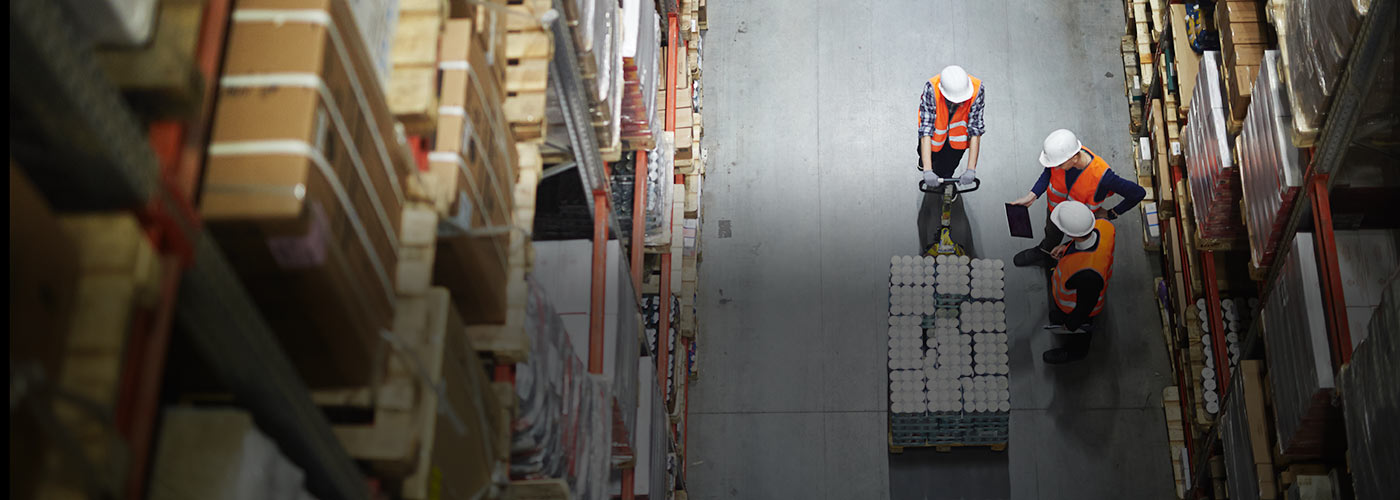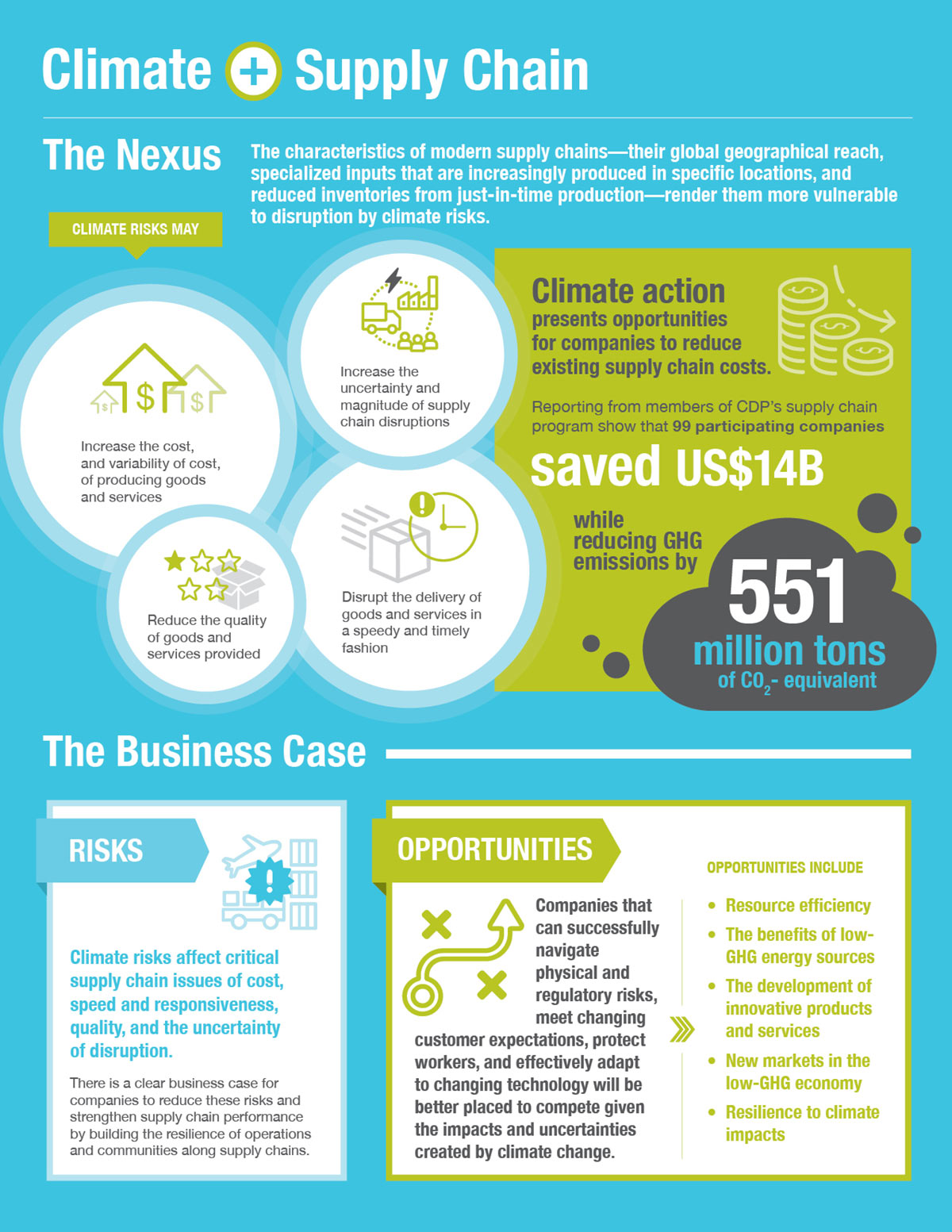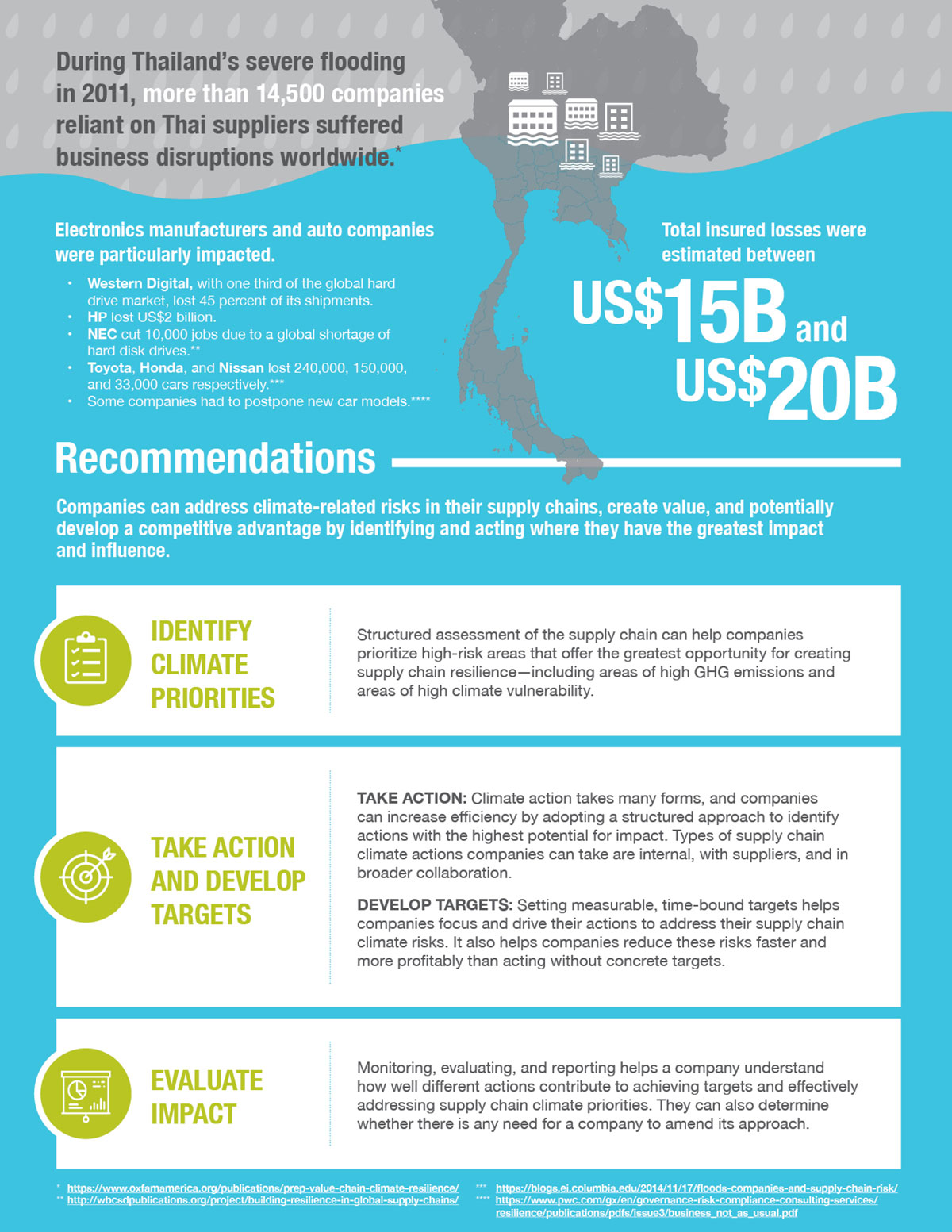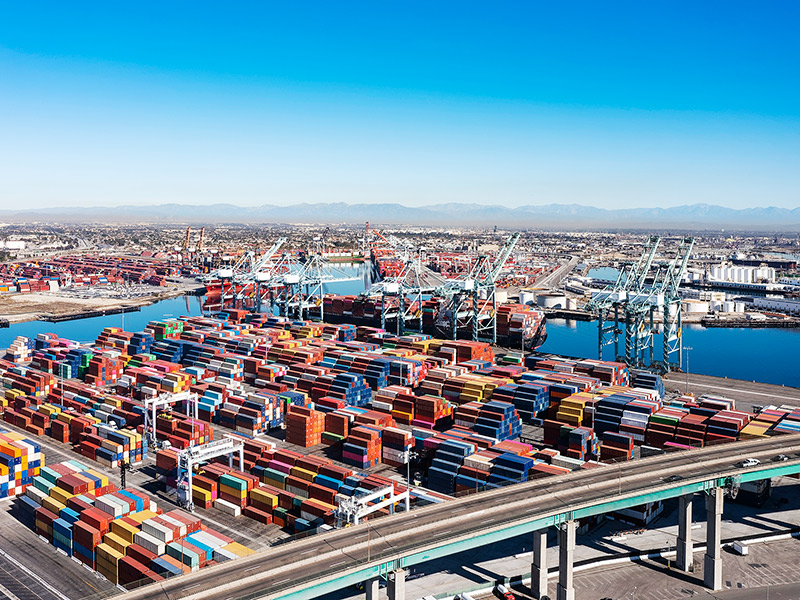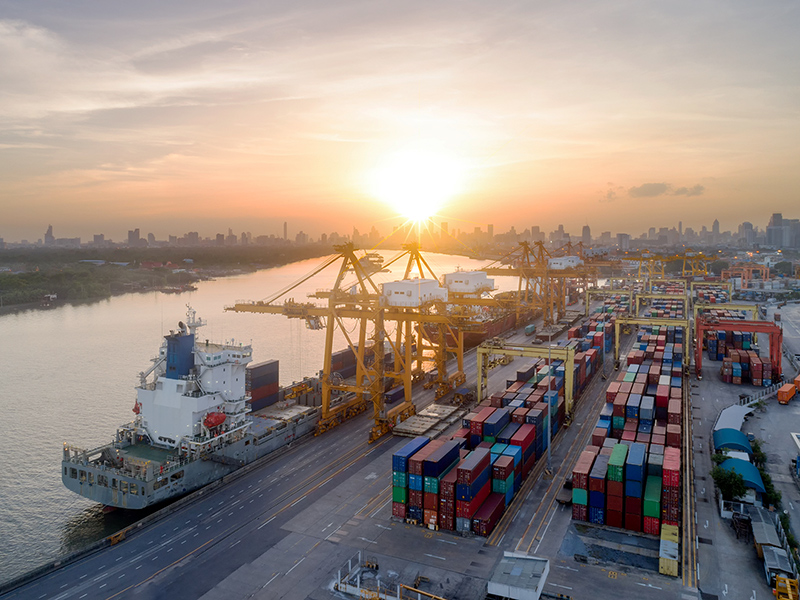Authors
-
David Wei
Former Managing Director, Climate and Nature, BSR
-
Marshall Chase
Former Associate Director, BSR
Climate change affects each and every human around the globe, with profound implications for social justice and human rights. Health-related stresses, competition for natural resources, and the impacts on livelihoods, hunger, and migration warrant immediate global action.
This paper explores the nexus of climate change and the supply chain. The purpose of this report is to:
- Identify the potential impacts that climate change will have on company supply chains, particularly vis-à-vis the focus of supply chain management on cost, speed, quality, and uncertainty.
- Outline how companies can enhance the resilience of their supply chains and operations, including supplier facilities; local communities; and the procurement of raw materials, components, and other goods and services.
This report is part of a series of six climate nexus reports that cover human rights, inclusive economy, women’s empowerment, supply chain, just transition, and health.
Climate and Supply Chain
The Nexus
The characteristics of modern supply chains—their global geographical reach, specialized inputs that are increasingly produced in specific locations, and reduced inventories from just-in-time production—render them more vulnerable to disruption by climate risks.
Climate risks may:
- Increase the cost, and variability of cost, of producing goods and services.
- Increase the uncertainty and niagnitude of supply chain disruptions.
- Reduce the quality of goods and services provided.
- Disrupt the defivery of goods and services in a speedy and timely fashion.
Climate action presents opportunities for companies to reduce existing supply chain costs. Reporting from members of CDP’s supply chain program show that 99 participating companies saved US$14B while reducing GHG emissions by 551 million tons of C02-equivalent.
The Business Case: Risk
Climate risks affect critical supply chain issues of cost, speed and responsiveness, quality, and the uncertainty of disruption.
There is a clear business case for companies to reduce these risks and strengthen supply chain performance by building the resilience of operations and communities along supply chains.
The Business Case: Opportunity
Companies that can successfully navigate physical and regulatory risks, meet changing customer expectations, protect workers, and effectively adapt to changing technology will be better placed to compete given the impacts and uncertainties created by climate change.
Opportunities include:
- Resource efficiency
- The benefits of low- GHG energy sources
- The development of innovative products and services
- New markets in the low-GHG economy
- Resilience to climate impacts
Climate and Supply Chain (continued)
During Thailand's severe flood in in 2011, more than 14,500 companies reliant on Thai suppliers suffered business disruptions worldwide.
Electronics manufacturers and auto companies were were particularly impacted.
- Western Digital, with one third of the global hard drive market, lost 45 percent of its shipments.
- HP lost US$2 billion.
- NEC lost 10,000 jobs due to a global shortage of hard disk drives.
- Toyota, Honda, and Nissan lost 240,000, 150,000, and 33,000 cars respectively.
- Some companies had to postpone new car models.
Total insured losses were estimated between US$15B and US$20B.
Recommendations
Companies can address climate-related risks in their supply chains, create value, and potentially develop a competitive advantage by identifying and acting where they have the greatest Impact and influence.
-
Identify Climate Priorities
Structured assessment of the supply chain can help companies prioritize high-risk areas that offer the greatest opportunity for creating supply chain resilience—including areas of high GHG emissions and areas of high climate vulnerability.
-
Take Action and Develop Targets
- Take Action: Climate action takes many forms, and companies can increase efficiency by adopting a structured approach to identify actions with the highest potential for impact. Types of supply chain climate actions companies can take are internal, with suppliers, and in broader collaboration.
- Develop Targets: Setting measurable, time-bound targets helps companies focus and drive their actions to address their supply chain climate risks. It also helps companies reduce these risks faster and more profitably than acting without concrete target.
-
Evaluate Impact
Monitoring, evaluating, and reporting helps a company understand how well different actions contribute to achieving targets and effectively addressing supply chain climate priorities, and whether there is any need for a company to amend its approach.
Climate Nexus Report Series
Download
Let’s talk about how BSR can help you to transform your business and achieve your sustainability goals.
